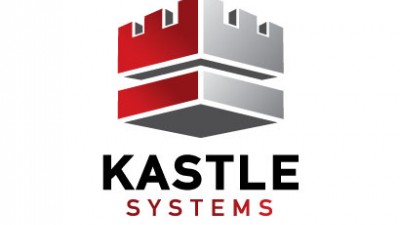AI-Enhanced Building Surveillance Notices Things Distractible Humans Can Miss

Keeping track of all of the people — tenants, guests and even intruders — who may enter a property is a tall order for any building manager.
Imagine being responsible for the security of a 582-unit multifamily community spread over 3 square miles. Add to this real-life challenge the fact that all 15 buildings were constructed at different times and each has its own legacy security system, and the task may seem nearly impossible.
At one time, the property owner in this situation might have hired a security team that rivaled a small town’s police force in size. That is an expensive and — because it relies so heavily on the human element — imperfect solution.
Instead, the owner adopted an artificial intelligence-augmented remote video system. Its 125 high-definition cameras deliver high-quality video to an off-site operations center. There, a team of operators can quickly determine whether an individual is a legitimate security risk or a visitor or tenant who is merely lost on the massive property.
“This allowed the operation to reduce their security staffing budget significantly as well as their total cost of ownership while simultaneously improving the safety and security of the apartment community,” said Haniel Lynn, CEO of Kastle Systems, which created and installed the video system the building owner utilized.
Bisnow spoke with Lynn about how remote video surveillance improves on the old paradigm of security guards watching video screens for long hours.
Bisnow: How does an AI-enabled remote surveillance system improve on older surveillance technologies?
Lynn: Most systems merely record activity over time and are used forensically to solve incidents after they have occurred. Or they require on-site guards staring at multiple video feeds from cameras simultaneously for hours on end, frequently during after-hours when no activity is seen.
A problem with this is that even people with good eyesight can fail to notice changes in their visual field. The continual visual stimulus from live video causes people to tune out at some point. AI, though, takes this “change blindness” out of the security equation while keeping human analysis at the center of it.
Remote video surveillance is proactive, with live agents who get alerted to activities of interest. As AI-enabled cameras detect the hint of a threat, based on preprogrammed digital analytic rules, they alert live remote monitors to an impending situation, and these agents can respond immediately to view, verify and confront threats with audio call-out before incidents occur.
Bisnow: What happens if a live agent needs to address a situation?
Lynn: They dispatch law enforcement and when they do — because the incident is visually verified in real time — police respond on average five times faster than to an unverified burglar alarm because they know it’s not a false alarm.
Bisnow: Aside from speed and accuracy, what advantages does the technology bring?
Lynn: Remote video surveillance can effectively cover more area simultaneously than adding more live on-site guards. But what’s highly compelling, and why demand for AI-enabled surveillance will grow in demand, is that all of this is achieved at cost savings of up to 70% relative to adding an additional on-site guard.
Bisnow: How easily does the system integrate with a building's existing security infrastructure?
Lynn: The technology is on an open platform, making it highly configurable to any existing infrastructure. This allows us to take over the access control and/or video surveillance operation of existing properties and their legacy infrastructure — even analog systems. Kastle installs, operates and maintains the hardware and software as a managed service provider and can configure the system on-site to seamlessly integrate and modernize the legacy components’ performance into a synchronized and centralized system.
Also, we are frequently brought in to provide the access control and video surveillance operation for the highly complex world of mixed-use development, where all these operations coexist and operate in the same expansive ecosystem.
Bisnow: How does a remote video surveillance system discern between real threats and false alarms?
Lynn: AI is highly accurate and never sleeps or loses interest, but its situational insight is limited. That is why the human element is critical. Once the AI notices activity and alerts a guard, that person can then clearly and objectively assess the situation and determine if there’s a legitimate security threat and respond accordingly.
Bisnow: Does the technology integrate with other proptech features?
Lynn: We can integrate our video with existing, legacy on-site video using network gateways to unify existing cameras to a Kastle-hosted platform — even transforming analog signals to digital.
If existing cameras are not AI-enabled, we can still tune in to their camera views with live surveillance on a regular schedule. This allows us to “tour” the property like a live on-site guard might do, but cover it much faster and more regularly.
Video camera triggers can be integrated with our access control so that every access event ties to a visual record of who actually entered. In other words, does the visual match the credential identity? We call it video verification of access.
This article was produced in collaboration between Studio B and Kastle Systems. Bisnow news staff was not involved in the production of this content.
Studio B is Bisnow’s in-house content and design studio. To learn more about how Studio B can help your team, reach out to studio@bisnow.com.

